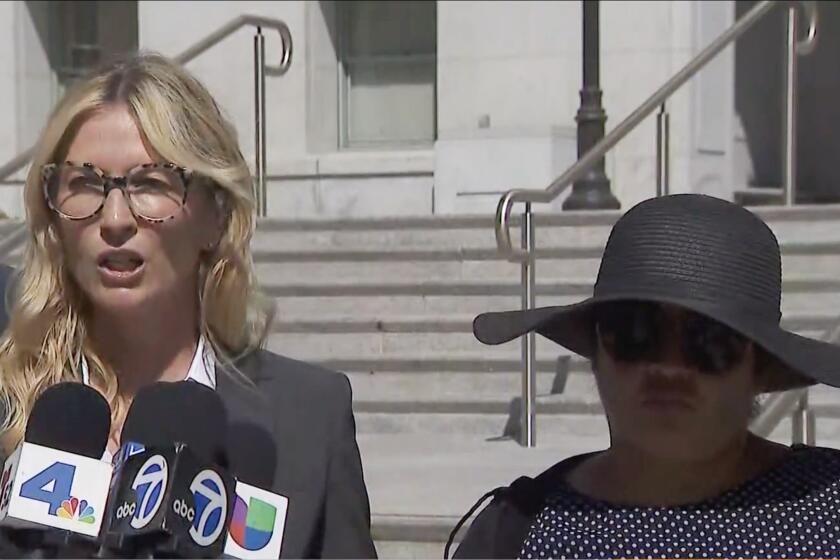Air Quality District Report : Bhopal-Type Disaster in L.A. Called Possible
In the event of a major earthquake or sabotage, a chemical disaster exceeding the Bhopal, India, calamity could occur in the South Coast Air Basin, a six-month study has concluded.
Also, the South Coast Air Quality Management District study warned, there is a “distinct possibility” that accidental releases of toxic chemicals not caused by an earthquake or sabotage would result in death and injury to chemical plant workers and nearby neighborhoods.
However, the severity of that type of accident would not approach the Bhopal tragedy, in which more than 2,500 people were killed when methyl isocyanate escaped from the Union Carbide plant there on Dec. 3, 1984.
The report, released Friday, added that there is a “reasonable assurance” that the combination of factors that contributed to the Bhopal disaster--including untrained personnel, inadequate safety systems and poor maintenance and the close proximity of large numbers of people--are not present here.
The study, which cost $79,000, was ordered by the AQMD after the Bhopal catastrophe to determine whether there could be a similar chemical emergency here. The AQMD said at the time that no single public agency had the authority to coordinate a large-scale chemical disaster affecting more than one jurisdiction.
In their reports, two private consultants and an AQMD employee called for the opening of discussions aimed at developing a means of coordinating the responses of a number of public and private agencies that would be involved. The AQMD plans a public hearing in September.
Consultant Eugene Calafato of La Jolla, a former aide to Gen. Alexander M. Haig Jr. at the North Atlantic Treaty Organization, told reporters, “The response of agencies in an integrated effort is not as it should be.”
For example, the report found that there is “poor organizational preparedness” for conducting mass evacuations in the event of “a major technological disaster.”
At the same time, Calafato strongly urged that local communities adopt right-to-know ordinances “with teeth in them” to force companies to identify what chemicals were on hand. Such a move, he explained, would enable firefighters and others responding to an emergency to know quickly what they faced.
Generally, larger companies with financial resources were given good marks when it came to plant safety, adequate equipment and safety systems and trained personnel. Smaller companies with less capital were more likely to need improvement.
But few of the firms surveyed, large or small, were prepared for a major earthquake or sabotage, according to the report.
“A worst case, though not unlikely, scenario postulates severe, simultaneous chemical emissions across a broad spectrum of plants,” the report said.
Instead of developing earthquake contingency plans, the firms are relying almost completely on local fire and police departments, the report said, adding, “The details of this reliance are at best nebulous.”
“Given such a situation, today’s planning is almost totally inadequate. . . ,” the report said. Except in defense-oriented industries, the report said precautions against sabotage are practically “nonexistent.”
Based on the survey, the study identified several chemicals that pose risks of an emergency because of their quantities in the South Coast Air Basin. Many of them are as dangerous as methyl isocyanate, the chemical involved in the Bhopal disaster. The chemicals identified were chlorine, hydrogen fluoride, hydrogen chloride, anhydrous ammonia, chloropicrin, gasoline lead additive, vinyl chloride and benzene.
The conclusions were based on a survey of 197 companies in the basin. Twenty of those firms were examined closely.
Co-authors of the report with Calafato were Robert Antonoplis of the AQMD and Ike Yen of Claremont.
More to Read
Sign up for Essential California
The most important California stories and recommendations in your inbox every morning.
You may occasionally receive promotional content from the Los Angeles Times.





